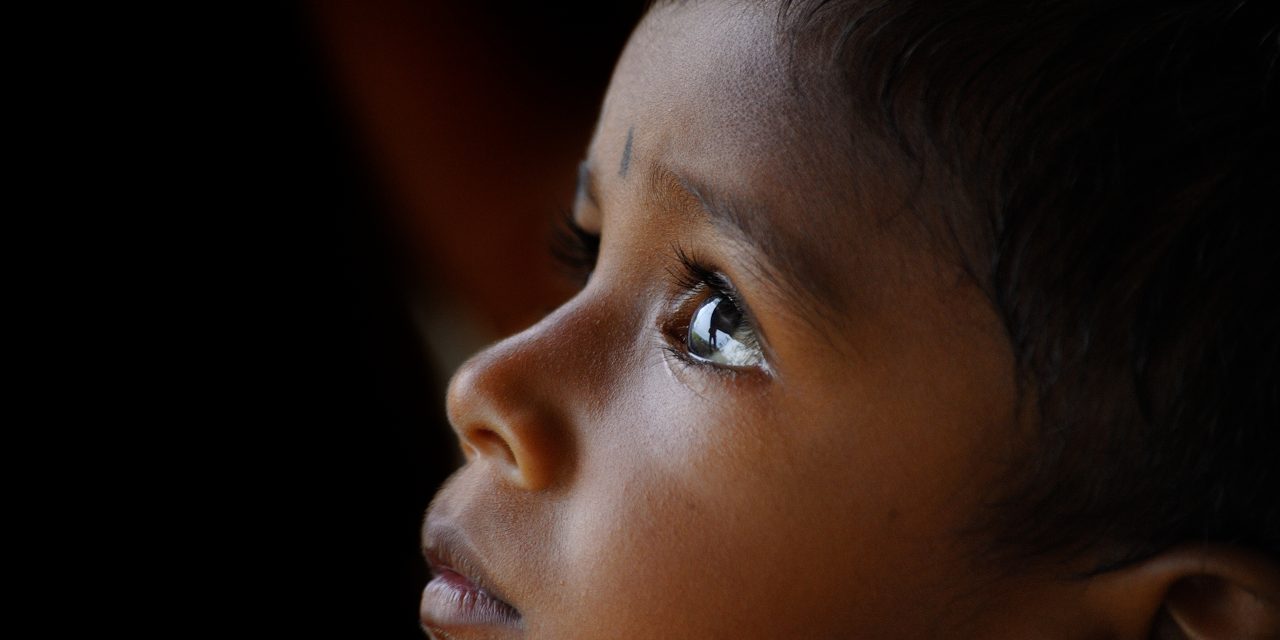India has seen a fourfold decline in the gender gap in survival of the girl child over last five years, as per a recent report by the United Nations Inter-agency Group for Child Mortality Estimation (UN IGME). But are we giving these girls a chance to truly live? If American philosopher John Dewey is to be believed, education is not preparation for life; education is life itself. Even as we move closer to accomplishing the Sustainable Development Goals, the one standalone goal that needs a bit more efforts is that of education of the girl child. Member states of the United Nations (UN) agreed on a progressive Framework for Action for the implementation of the Sustainable Development Goal (SDG) of Education in 2015, upon the release of the Incheon Declaration, which considers education to be a fundamental right. In the Preamble of the Incheon Declaration, point number 8 mentions
We recognize the importance of gender equality in achieving the right to education for all. We are therefore committed to supporting gendersensitive policies, planning and learning environments; mainstreaming gender issues in teacher training and curricula; and eliminating gender-based discrimination and violence in schools.
The Incheon Declaration commits to a model of education that is non-discriminatory. It recognises the importance of gender equality and women’s empowerment for sustainable development in our world. It provided a clarion call for the fulfilment of the agenda of Education for All and a promise for peaceful, just and equal societies; a world where people are equal. And this can be achieved only if the education that is provided espouses that not only in the content taught but in the model itself. Gender inequality is of particular concern. In the UNESCO EFA Global Monitoring Report (2015), it was found that only 69% of countries were projected to achieve gender parity in access to education at the primary school level by 2015 while the figure stood at 48% for education at the secondary school level.
But is India on the path to achieving the noble goals put out in this Declaration?
Let us look more closely at this in this article, and try to find ways to make the suggestions of the Declaration workable points in the largest democracy of the world.
The Realities Of Girl Child Education In India
Social exclusion can arise through long-term persecution of individuals based on one’s membership of certain social and ethnic groups that are distinctly identifiable. This social phenomenon tends to create barriers to facilities for individual development such as education for children. This is particularly seen in the case of girls, as beautifully described by Lockheed in his seminal work Gender and Social Exclusion. Research over the years has shown that female children are particularly vulnerable, especially if belonging to marginalised communities, in what can be seen as a prime example of the interplay and intersectionality of vulnerability due to different social identities. Even though one has seen healthy economic growth coupled with social policy interventions, better human development outcomes, particularly in girl child education, have remained elusive. Gender inequality in India remains ranked 130 on the United Nations Development Fund’s Gender-Related Development Index, which is a composite index measuring women’s status based on female to male ratio, life-expectancy at birth for males and females, and mean years of schooling. The Indian parliament passed the Right to Education Act (RTE) in 2009, making eight years of quality education a fundamental right for every girl and boy in India. This has resulted in improvements in enrollments in schools. However, the picture is not all that rosy.
The out-of-school rate of children at the primary school level stands at 17% with 18% of girl-children being out of school at that level of education, while the net-attendance stands at 83% in general and 82% for girl-children at the primary school level, as per recent UNICEF data. The net-attendance rate at the secondary school level is 54% in general and 49% for girl-children, while the upper secondary completion rate is 25% in general and 21% for girl-children in India. Earlier this year, a report by the National Commission for Protection of Child Rights’ (NCPCR) found that a majority of Indian adolescent girls do not attend any educational institution. The Commission found that this was not because they were working but rather because they were either forced to do household duties, were dependent on others or were engaged in begging. The 11th Annual Status of Education Report by Pratham Education Foundation revealed similar findings. It found that in states like Rajasthan, Madhya Pradesh and Uttar Pradesh, more than 8% girls in the age-group of 11-14 were out-of-school! This is the sorry state of affairs of girls, even today, 71 years after India became Independent.
Education = Empowerment?
Yes and no! Education does make a person capable of making informed choices in life, develop one’s skills and talents, and learn about things that may have direct or indirect uses in his/her life. It gives the individual the power to use one’s intellect in a way that is not only beneficial for his/her participation in society but also for the various demands of existence and sustenance of oneself, mentally and physically. Most importantly, Education opens up various avenues of employment and makes economic opportunities available to an individual. However, is Education a sure-fire way to empower an individual? As much as we all may naively think that it should be enough, it is not that simple or straightforward in the case of women. A recent study by the International Center for Research on Women (ICWR) did mention the positives of educating girls by stating that
Women are more likely to control their own destinies and effect change in their own communities when they have higher levels of education.

However education and empowerment often do not go hand-in-hand for girls. Most educational programmes focus on the acquisition of formal knowledge and often technical skills that are needed to take up employment in a specific sector. For adolescent girls, this has meant being trained in an activity such as sewing, small-scale production and marketing of food and dairy products, production of handicraft and art. While this gives the girls the right training and know-how that could help them become employed, does this empower them truly?
Does formal education today break the shackles of the mind when it comes to the status of women in society? Does it make girls more confident in facing any and every hardship that may come their way?
Mostly not! What is needed is a more holistic approach that places a strong emphasis on helping girls develop a wider awareness of themselves and the external context and society they live in. Sessions are needed to instill confidence and self-esteem in them so that girls do not just survive but are empowered enough and truly so as to be able to act on their ambitions in the future. It is that kind of empowerment that is sorely not thought-of when making training and education programmes for girl children today.
Girls must be informed of women’s rights and children’s rights, besides being made aware of nuances of health, particularly reproductive health, and hygiene. There needs to be cells in each district that has regular discussion groups where girls can bring their concerns and any other issues they may want to discuss. Often peer-to-peer interaction and community discussions are better educators than formal training or classroom teaching. Self-help groups and micro credit provisions for women who want to take up the initiative on any economic activity must be in place. And the important thing is that it should not be anyone else but the women themselves who need to take the initiative on this. And this can only happen when the women are confident and aware of their realities as much as they are aware of the realities of the society around them. That is what I called true education, an education that empowers or rather edupowers.
Ways Ahead
Much as learning happens mostly in the classroom, so should gender-sensitisation in direct and indirect ways. Increased participation of girls in the classroom, encouragement of girls to engage with the subjects and their peers, and activities that instill a sense of confidence in the girls are much needed today. We also need teachers who are trained and are gender-sensitive. Teachers must be aware of Child Rights and any special needs of girl children in their classrooms. I personally feel that more recruitment of women teachers will naturally arise as inspirational for girls who may want to go down a similar path or even otherwise, as an instance of empowering women in a way that the girls can directly and immediately relate to. As per a recent UNICEF study, the enrolment of girls is higher in primary schoolin countries where a higher proportion of women teachers are employed. Not to forget, one needs to summarily remove any and all gender biases and traces of sexism from textbooks and other educational materials.
A key area that needs focus is the provision of health facilities along with proper sanitation and hygiene in the schools. A 2014 report by the NGO Dasra called “Spot On!” found that nearly 2,30,00,000 girls drop out of school annually due to lack of proper menstrual hygiene management facilities. This includes availability (or lack thereof) of sanitary napkins and logical awareness of menstruation. Many girls are also unaware of the health aspects that emerge upon reaching puberty. Not to forget, societal stigmas related to menstruation makes around 20% girls drop out. Not only should toilets and basic medical facilities be improved in schools, but education and awareness building workshops must be undertaken on the topic of reproductive and general health and hygiene.

Last but not the least, sometimes girls are constrained by the need to do household chores in villages in India. While I would like this to be summarily removed, if possible, and to dissociate such chores from gender roles, this ideal scenario is often not possible or supported by more than a few. In such cases, the education and training needs to take into account these realities. Flexible learning hours and home tuitions must be promoted, besides educational activists engaging with parents regarding the importance of education. Peer-to-peer interactions and senior-junior counselling must be promoted among students in such a way that if girls need to attend off-hour classes then additional support systems must be in place to aid their education. Also, since girls are often not exposed to society beyond a limited lot in villages and small towns in India, education in local languages can often be better suited for girls. This is not to say that they must be deprived of other languages, particularly English. But this can be done in a gradual, phased manner if that is what helps in the education of girl-children in a certain place. These are some of the strategic ideas that come to my mind when it comes to facilitating better opportunities for the education and training of girl children across the country.
In Conclusion
They say when you educate a man you educate an individual while when you educate a woman you educate a family, since a mother always voluntarily orients her child in a certain way, and this is not to enforce any gender stereotypes but the love and care of a mother that few can match. Today, the realities of education in India show that we have a lot that needs to be done for girl children still. Prime Minister Narendra Modi may have launched the ‘Beti Bachao, Beti Padhao’ movement but its implementation still has to reach an optimum level and in this regard, not only the government but various other stakeholders such as civil society, media and private entities need to play a proactive role. More importantly, educating and empowering the girl child would naturally preempt any need to ‘save them’. All major epics in India and the world faced a point of destiny when things took a turn for the worse whenever women were either harmed, insulted or disregarded. This in itself should bear testimony to the understanding that women maintain a balance in society that only they can. It is only when they can see the beauty and strength in them that society too can become truly strong and beautiful in its composition. I would like to end this article with a few lines from someone I hope will stand for, and win, the US Presidency by toppling Donald Trump: Michelle Obama –
No country can ever truly flourish if it stifles the potential of its women and deprives itself of the contributions of half of its citizens…When girls are educated, their countries become stronger and more prosperous.
Mrittunjoy Guha Majumdar
(This article was selected and showcased as a part of #EveryGirlInSchool, a campaign by the High Commission of Canada, Nutrition International and Youth Ki Awaaz to advocate for equal opportunities for girls in India)
(Picture Credits: Flickr)
















